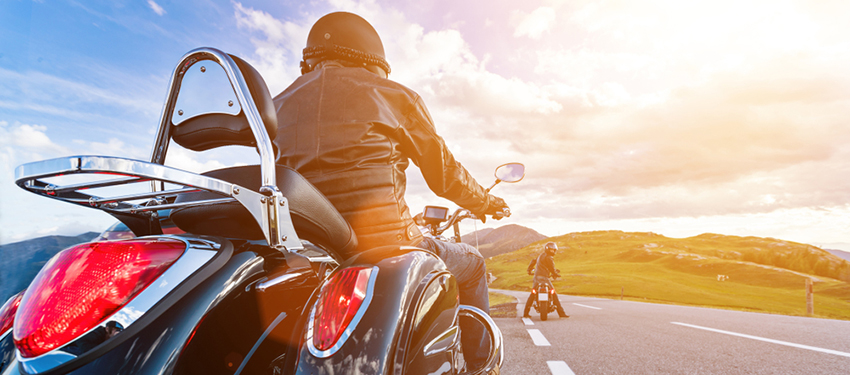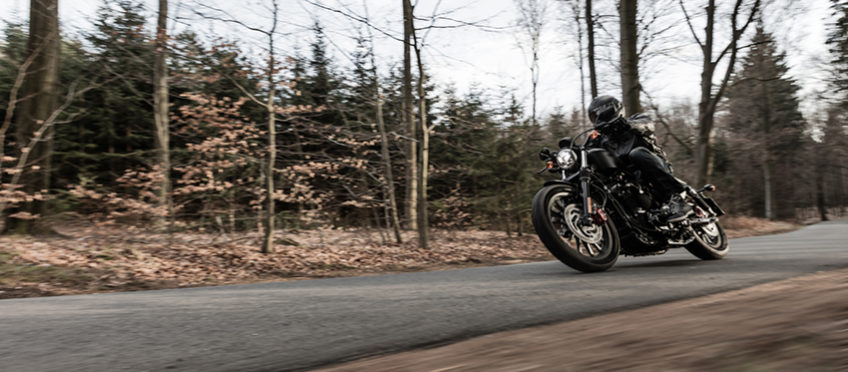Motorcycle riding season is winding down in Ontario, but there are ways to extend your riding season in comfort and safety.
10 Tips to Extend your Motorcycle Riding Season
1) Dress properly.
Effective layering and correct choice of gear makes a remarkable difference in your ability to stay warm.
1) Start with good base layers—long-sleeved tees, leggings, and socks. Merino and synthetic materials are good but stay away from cotton. Thin fabrics allow you to layer without adding excessive bulk.
2) Wear abrasion resistant gear with a windproof (and ideally waterproof) outer layer.
3) Invest in electric gear. It does an amazing job of keeping you toasty. A vest is the most important piece because it keeps your core warm and warms your blood as it circulates through and back to your extremities. Recognize that heated gear draws extra energy so read the installation instructions to see if the manufacturer advises installing a higher amp fuse. In any event, carry spare fuses.
4) Wear a neck warmer and a tightly sealed fullface helmet with a fog-free face shield.
5) Choose waterproof, lined gloves with gauntlets to direct cold air over sleeve openings.
6) Select Gore-Tex boots to keep your feet warm and dry.
2) Set up your motorcycle for cold weather riding.
1) Install a larger windscreen to deflect cold air around you.
2) Consider installing hand guards to redirect cold air and rain over your hands.
3) Pay extra attention to your tires.
Rubber hardens in the cold, leading to limited traction, so take extra precautions. Riding helps warm the tires as you brake and accelerate (not by swerving) but they’ll cool again when you stop for a break. Make sure there’s plenty of tread to channel water or snow. Check your tire pressure more often as tires lose pressure in the cold. A general rule of thumb is a one to two-pound air pressure drop for every 10 degrees F.
4) Increase your awareness of potential hazards:
1) Watch the pavement surface. There are likely to be more cracks, uneven surfaces, potentially sand and salt on the road, and holes dug up by plows.
2) Watch for black ice. This thin transparent coating, which is very difficult to spot, is most commonly found on bridges, overpasses, and shaded surfaces. Avoid braking or turning if you do encounter it.
3) Increase your field of vision. Look further down the road to recognize hazards and react defensively. Maintain a greater following distance to better react to road and traffic conditions.

5) Make yourself visible.
Other drivers don’t see you at the best of times, let alone when they’re not expecting you to be out there. High-visibility gear with reflective inserts catches their attention.
6) Use your bike’s ambient temperature gauge as a guide only.
It will likely read warmer than the road surface temperature. If it’s showing the temperature barely above freezing, assume the road surface is at or below freezing.
7) Adjust your travel time.
Daylight hours are scarce and darkness makes it harder to read the road surface and detect unsafe surface conditions. It also means dropping temperatures. Reduce your riding time to increase your ability to see your surroundings and stay warm. Reduce your speed to reduce wind chill.
8) Stay hydrated.
Even bundled up, perspiration and respiration deplete your fluid levels, which hasten the onset of hypothermia. Carry water in a container and location that’s accessible, like a Camelbak in your tank bag with the nozzle within reach, so you can sip safely while riding.
9) Watch the weather.
It’s unpredictable at this time of year. If you’re going on a long ride, be flexible with your plans and allow time to leave or return early to avoid unfavourable conditions—like snow. It’s more important to avoid getting lost or trying new routes when there’s a risk of getting stuck out in the cold. You don’t want to burn daylight looking for directions or a place to stop enroute.
10) Know the signs of hypothermia: shivering, clumsiness, lack of coordination, and memory loss.
Their onset can be insidious and often you don’t feel them until you’ve stopped for a break. Once you notice them, it’s time to warm up before resuming your ride. Better yet, call it a day.
These steps do take more effort and awareness, however, these late autumn rides have a beauty all their own. Use the same tips to get a head start on next year’s riding season.









join the conversation